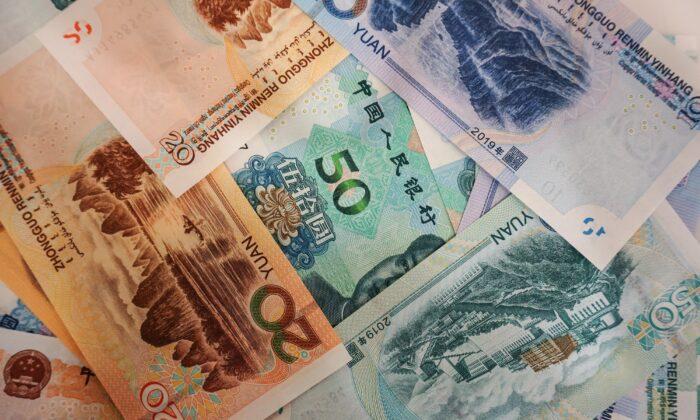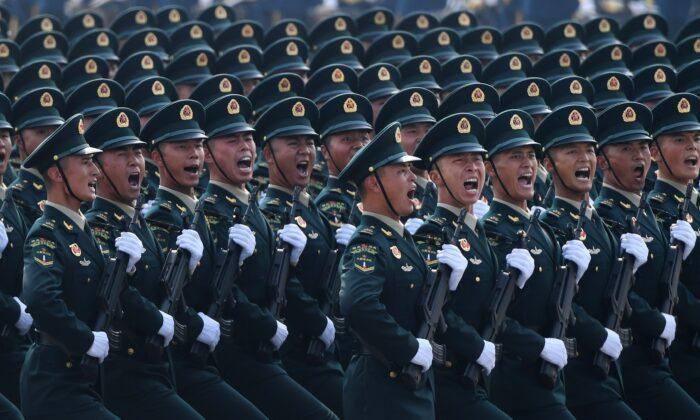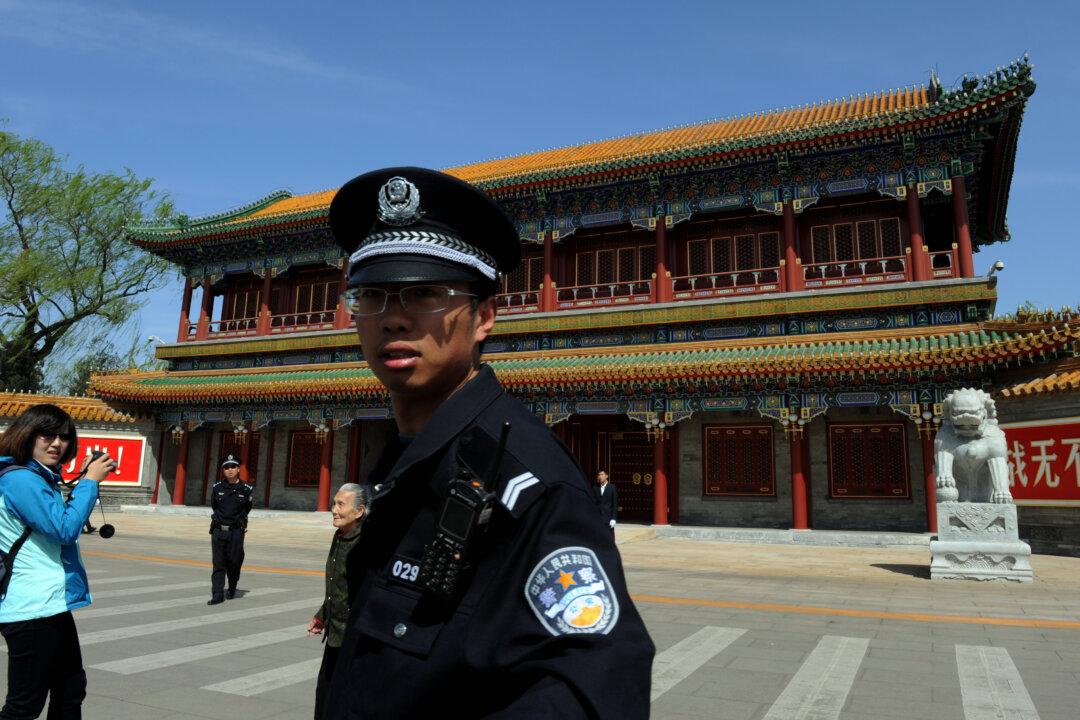China’s latest Consumer Price Index (CPI) for January fell 0.8 percent year-on-year, signaling a continued risk of deflation in the economy. However, between 2021 and 2023, China’s monetary authority issued about 54 trillion yuan (US$7.6 trillion) of banknotes. Despite the increase in money supply, it appears to have failed to impact the economy positively.
Food prices in China fell 5.9 percent year-on-year in January, according to the statistics. Among the food items, the prices of pork, fresh vegetables, and fresh fruits fell by 17.3 percent, 12.7 percent, and 9.1 percent year-on-year respectively, which were the main factors driving the year-on-year decline in the CPI.
China’s year-on-year CPI figures have been on an overall downward trend since the beginning of 2023 to January this year, and have now declined for four consecutive months. The year-on-year decline of January was the largest since September 2009, underscoring the mounting pressure of deflation.
Meanwhile, the nation’s industrial producer price index (PPI) also fell in January, both on a year-on-year and a month-on-month basis at 2.5 percent and 0.2 percent respectively.
However, official statistics also show that the CCP issued about 54 trillion yuan (US$7.6 trillion) in banknotes between 2021 and 2023.
At the end of December 2023, the balance of China’s broad money (M2) was 292.27 trillion yuan (US$41.14 trillion); at the end of December 2022, the balance of M2 was 266.43 trillion yuan (US$38.15 trillion); and at the end of Dec. 2021, the balance of M2 was 238.29 trillion yuan (US$37.4 trillion).
Based on the above figures, the CCP likely issued an additional 25.84 trillion yuan (US$3.63 trillion) in 2023 and 28.14 trillion yuan ( US$4.03 trillion) in 2022. Altogether, the CCP printed as much as 53.98 trillion yuan (US$7.66 trillion) in two years.
Broad money (M2) is calculated as the total amount of money in circulation plus demand deposits, as well as time deposits and savings deposits.
Ma Jinghao, a Chinese tax expert, posted on China-based social media platform Weibo in February 2023 that China issued a total of 28 trillion yuan in 2022, a figure equal to that of the United States, Japan, and the European Union combined, while China’s GDP was only about 70 percent of that of the United States.
Paradox of China’s Economy
Lu Yuanxing, a U.S.-based political and economic analyst and former corporate executive in China, said that the CCP has been vigorously denying that deflation is occurring in the Chinese economy for the past year and during the post-pandemic era, when the country has been struggling with its economic recovery.In an interview with The Epoch Times on Feb. 16, Mr. Lu said: “Deflation is, of course, due to the economic downturn. But the reality is that China’s economy can no longer be simply applied to the framework of traditional Western economics. In other words, it no longer conforms to the traditional notion of inflation or deflation but has become a unique economic model under the control of the CCP’s authoritarian regime.”
According to Mr. Lu, in Western liberal economies, an increase in money supply is usually viewed as inflationary and vice versa. In addition, an increase in the CPI is also considered a sign of inflation, while a decrease is considered deflation. However, there is a bizarre and contradictory phenomenon in China where the money supply has increased significantly while the CPI dropped. So, deflation has been occuring as the regime issues more currency, which defies economic norms.
Loans Turning Into Deposits
According to the CCP’s official data, the new currency issued by the CCP in 2023 almost exactly matches its total deposit growth. Under the regime’s centralized economy, its newly issued money did not go into circulation to become new investments with the potential to boost the economy. Instead, China’s deposit growth simply increased at a pace matching the regime’s increased currency issuance.“The CCP’s newly issued currency has been released in the form of loans, and these funds have subsequently been turned into deposits,“ Mr. Lu explained. ”[In China], companies and regime institutions accounted for nearly 80 percent of the loans, which means that the money mainly went into China’s large state-owned enterprises (SOEs).
“Those funds have not been invested in places to generate growth, such as in the failing real estate sector, since they understood very well that it is unlikely to be profitable. Therefore, much of the loans have been saved as deposits, and some of it has been divided among the rich and powerful within the regime. Therefore, these funds have not actually entered into circulation.”
According to the data, by the end of 2023, China’s loans increased by 22.75 trillion yuan (US$3.23 trillion). Among the new loans, household loans increased by 4.33 trillion yuan (US$0.61 trillion), accounting for about 19 percent of the annual new loans, and loans to companies and regime institutions increased by 17.91 trillion yuan (US$2.54 trillion), accounting for about 78 percent of the annual new loans.
Among the loans made to state-owned companies, medium- and long-term loans increased significantly by 13.57 trillion yuan (US$1.93 trillion), accounting for about 76 percent of the increase in loans to companies, while the proportion of short-term loans was much smaller.
Typically, in terms of the use of loans, medium- and long-term loans tend to be utilized in areas such as fixed asset investment, while short-term loans are usually for borrowers’ liquidity needs in production and operations.
According to Mr. Lu, the CCP is desperately printing money since China’s economy has been experiencing severe deflation for the past two years. The regime still thinks that issuing more currency will stimulate economic growth, but China’s biggest problem now is its lack of spending power, he warned.
“One of the reasons for the lack of consumption is that the population has declined so much that fewer people are spending less money,” he said. “Lots of people died during the pandemic, and the CCP has been covering up the truth.







